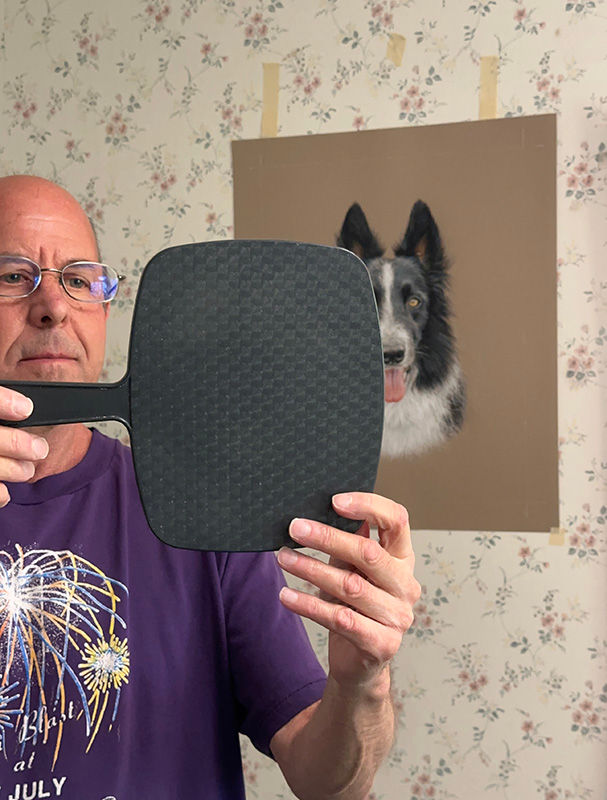Raven portrait in progress 10 - Life in a mirror
- Kevin Roeckl
- Jul 18
- 2 min read
When I finish a portrait I tape it up on the wall of my studio, stand back and look at it, make an adjustment, stand back and look again, etc. And I look at it in a mirror over my shoulder.
Sometimes that will make things jump out that an artist hadn’t noticed…because we have been looking at it for so long while working on it that we "can't see it any more".
1
I look at the artwork at the distance a viewer would see when it’s framed and hung on a wall. Usually it looks pretty good, but sometimes I see something that’s too light or dark, more color needed to fill in an area more solidly, touch up any little detail that doesn’t look quite right. I go back to my work-table to make the changes and then hang it up again and stand back. Sometimes I grab a pencil and make the change while it’s taped up on the wall. Sometimes just a single pencil-stroke or two is all that’s needed to satisfy me.


I made quite a few adjustments to the edges of Raven’s black mane so it looked symmetrical, and to the white ruff where it fades out to the paper color, to give a nice soft curve to Raven’s white fur. He does have a black marking on the right shoulder that isn’t there on the left. (Reversed in the mirror.) That threw me off when I depicted it: that black piece stands out more visually than the white. And because black fur (black and various grey pencils) has to fade a little differently to the grey-brown paper than white pencil does. Standing back and looking at it in a mirror helped me adjust that.
How to fade out the bottom of a head study is often a challenge for a portrait artist. An abrupt edge doesn’t look good, usually.
🎨 Prismacolor pencil on “Sand” Canson Mi-Teintes paper, 16 x 20 inches.
“Raven”
Conant’s Raven Nevermore CDX RN
Commissioned by Cathy Nearman.





Comments